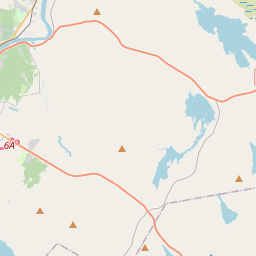Civil War Memorial
Historical marker location:






April 12, 1861: The Civil War begins with the Confederate attack on Fort Sumter, located in South Carolina's Charleston Harbor.
April 15, 1861: President Abraham Lincoln issues a call for 75,000 volunteers to serve in the Union Army to suppress the rebellion.
May 24, 1861: The first major land battle, known as the First Battle of Bull Run (or First Battle of Manassas), takes place in Virginia. It ends in Confederate victory.
September 17, 1862: The Battle of Antietam in Maryland becomes the bloodiest single-day battle in American history, with heavy casualties on both sides. The Union forces, commanded by General George McClellan, manage to halt Confederate General Robert E. Lee's advance into Union territory.
January 1, 1863: President Lincoln issues the Emancipation Proclamation, declaring that all slaves in Confederate-held territories are to be set free. However, the proclamation does not immediately free all slaves in the United States.
July 1-3, 1863: The Battle of Gettysburg in Pennsylvania takes place, resulting in a significant Union victory and inflicting heavy casualties on Confederate forces. It marks a turning point in the war.
November 19, 1863: President Lincoln delivers the Gettysburg Address, emphasizing the principles of liberty, equality, and the preservation of the Union.
April 9, 1865: General Robert E. Lee surrenders to Union General Ulysses S. Grant at Appomattox Court House in Virginia, effectively ending the Civil War.
April 14, 1865: President Lincoln is assassinated by John Wilkes Booth while attending a play at Ford's Theatre in Washington, D.C.
May 10, 1865: Confederate President Jefferson Davis is captured, signaling the collapse of the Confederate government.
December 6, 1865: The Thirteenth Amendment to the United States Constitution is ratified, officially abolishing slavery throughout the country.
While this timeline provides an overview of key events, it is important to note that the Civil War spanned over four years, from 1861 to 1865, and encompassed numerous battles, campaigns, and political developments that shaped the course of American history.
Maine was originally part of Massachusetts: Maine was a part of the Massachusetts Bay Colony and was officially recognized as a separate state on March 15, 1820, becoming the 23rd state of the United States.
In the early 17th century, European explorers and fur traders began to make contact with the Penobscot tribe and establish trade relationships. However, tensions between European settlers and Native Americans grew as more settlers arrived and claimed the land for themselves. This culminated in the 17th and 18th centuries with conflicts known as the Indian Wars, which resulted in the displacement and marginalization of Native American populations.
The area was officially incorporated as Penobscot County in 1816, named after the Penobscot River which flows through the region. The county quickly became an important center for timber and shipbuilding as the logging industry boomed, taking advantage of the extensive forests in the area. Sawmills and lumberyards sprang up along the river, contributing to the county's economic growth.
In the 20th century, Penobscot County continued to develop and diversify its economy. The area became a hub for agriculture, manufacturing, and trade. The city of Bangor, located in the county, emerged as a major cultural and commercial center. Today, Penobscot County is known for its natural beauty, with its forests, lakes, and rivers attracting outdoor enthusiasts. It also boasts a strong educational and healthcare system, as well as a vibrant arts and culture scene.
Penobscot County Timeline
This timeline provides a condensed summary of the historical journey of Penobscot County, Maine.
- 1786 – Penobscot County established as a county in the state of Maine.
- 19th century – The region experiences growth in agriculture and lumber industry.
- 1830s – Bangor becomes a major lumber port, attracting settlers and businesses.
- 1880s – The railroad reaches Penobscot County, promoting further economic development.
- 20th century – The county goes through periods of economic prosperity and decline.
- Mid-1900s – The decline of the lumber industry leads to a shift towards manufacturing and services.
- 1967 – The Great Northern Paper Company, once a major employer, closes its mills.
- 1980s – Efforts for revitalization and diversification of the local economy begin.
- Present – Penobscot County is known for its natural beauty, outdoor recreational opportunities, and a mix of rural and urban areas.